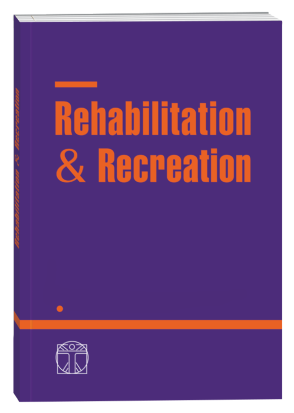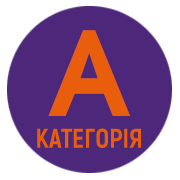USING THE NATURAL AND RECREATIONAL POTENTIAL OF THE REGION IN PHYSICAL AND HEALTH ACTIVITIES
DOI:
https://doi.org/10.32782/2522-1795.2025.19.2.14Keywords:
natural and recreational potential, Rivne region, physical culture and health activities, educational and health trainings, questsAbstract
Due to its physical-geographical features, climate conditions, natural-resource potential, and socioeconomic conditions, Rivne Oblast belongs to regions that have favorable preconditions for tourism and recreation development. Almost all types of recreation are developed in the region: from sanatorium and resort treatment to leisure activities, and there are also favorable conditions for year-round development of various types of wellness physical culture. Therefore, it is relevant to characterize the natural resources of the Rivne region, which will help identify the prerequisites for recreational activities and determine measures for their effective use. The purpose – to reveal the use of the region’s natural and recreational potential in wellness activities using Rivne as an example. Research methods. To achieve the outlined goal, the following research methods were used: analytical (study and analysis of regulatory, scientific, and methodological literature on this issue, Internet resources), synthetic (comparison, systematization, generalization of materials). Results. A special value of the Rivne region is its unique natural environment. With the expansion of types and forms of physical education and recreation, it can be argued that the territory of the Rivne region has the potential to organize recreational activities and tourism. Recreational and tourist potential is the total productivity of explored natural resources and cultural values of the territory, which can be used for recreational purposes: for health improvement, recreation, and tourism. The main goal of the social project “Active Parks – Locations of Healthy Ukraine” is to involve people in systematic health training aimed at developing the basic motor abilities of a person. In order to implement the project within the framework of the educational process, the prospect of filling parks with activities was considered. The methodology for conducting physical education and recreation activities in the recreational zones of the city is presented: educational and health training and quest. Conclusions. The conducted research demonstrated the importance of using the natural and recreational potential of the region in physical culture and health activities. In modern conditions, knowledge of the natural resources of the Rivne region and their characteristics contribute to the development of new forms and methods of conducting educational activities.
References
1. «Активні парки – локації здорової України» : Указ Президента України від 17 грудня 2020 року № 574/2020. URL: https://www.president.gov.ua/documents/5742020-36049.
2. Положення про рекреаційну діяльність у межах територій та об’єктів природно-заповідного фонду України : Наказ Міністерства захисту довкілля та природних ресурсів України від 26 липня 2022 року, № 256. URL: https://zakon.rada.gov.ua/laws/show/z1043-22#Text.
3. Білик В.Г., Омельчук О.В., Мегалінська Г.П. Природничо-науковий коворкінг як засіб формування готовності майбутніх фахівців фізичної рекреації до безпечної поведінки в екосередовищі. Науковий часопис Українського державного університету імені Михайла Драгоманова, 2024. 12 (185), 40–46. https://doi.org/10.31392/UDU-nc.series15.2024.12(185).07.
4. Вихляєв Ю.М., Дудорова Л.Ю. Рекреаційні технології, їх роль і місце в системі фізичної культури. Науковий часопис НПУ ім. М.П. Драгоманова, 2022. 1(145)22, 27–31. doi: 10.31392/NPU-nc.series15.2022.1(145).07.
5. Гнєтнєв М., Басалик С. Освітні квести на практичних заняттях із дисциплін оперативно-розшукового профілю. Збірник наукових праць Національної академії державної прикордонної служби країни. Серія : Педагогічні науки, 2023. 1 (32), 48–63. URL: https://dspace.nadpsu.edu.ua/bitstream/123456789/3898/1/1315-%D0%A2%D0%B5%D0%BA%D1%81%D1%82%20%D1%81%D1%82%D0%B0%D1% 82%D1%82%D1%96-3083-1-10-20230530.pdf.
6. Кузнєцова О.Т., Гамма Т.В., Мерецька І.В., Кособуцький Ю.Ф. Природно-ресурсний компонент туристично-рекреаційного потенціалу Рівненської області. Науковий часопис Українського державного університету імені Михайла Драгоманова, 2025. 2(187), 110–115. URL: https://doi.org/10.31392/UDU-nc.series15.2025.02(187).20.
7. Пам’ятки природи. Рівненська обласна державна адміністрація. Офіційний вебсайт. URL: https://www.rv.gov.ua/pamyatki-prirodi.
8. Стельмах В. Природні та історико-культурні рекреаційні об’єкти Рівненщини. Вісник Львівського університету. Серія географічна, 2023. 43 (1), 92–98. URL: file:///C:/Users/%D0%95%D0%BB%D0%B5%D0%BD%D0%B0/Downloads/VLNU_Geograf_2013_43(1)__14.pdf.
9. Шевчик Л.О., Кравець Н.Я. Застосування квесту як технології практико-орієнтованого навчання студентів медичних вишів. Медична освіта, 2018. № 3. 78–81. doi: 10.11603/me.2414-5998.2018.3.8722.
10. Andrieieva O., Maltsev D., Kashuba V., Grygus I., Zaharina E., Vindyk A., Skalski D., & Hutsman S. The Correlation between the Level of Health-Improving and Recreational Physical Activity and Family Well-Being. Physical Education Theory and Methodology, 2022. 22(3s), 94–101. https://doi.org/10.17309/tmfv.2022.3s.13.
11. Bazylchuk V.B., Sushchenko L.P., Bezkopylny О.О. Current stage of development of health-improvement and recreation motor activity of students in educational environment of Ukrainian universities. Rehabilitation and Recreation, 2024. 18(2), 53–63. https://doi.org/10.32782/2522-1795.2024.18.2.6.
12. Griban G., Kuznietsova О., Tkachenko P. et al. Formation of the Students’ Volitional Qualities in the Process of Physical Education. International Journal of Human Movement and Sports Sciences. 2020. 8 (6), 505–517. doi: 10.13189/saj.2020.080625.
13. Nosko М., Sahach О., Nosko Y., Griban G., Kuznietsova O. Professional development of future physical culture teachers during studying at higher educational institutions. International Journal of Applied Exercise Physiology. 2020. 9(5). 44–55. MAZANDARAN, IRAN, PO Box: 14665-1998. URL: https://scholar.google.com.ua/citations?view_op=view_citation&hl=uk&user=wtmSsuAAAAAJ&citation_for_view=wtmSsuAAAAAJ:tz746QTLzJkC.
14. Skalski D., Nesterchuk N., Skalska E., Kindzer B. Rekreacja ruchowa dla społeczeństwa – wybrane współczesne aspekty. Rehabilitation and Recreation, 2021. (8), 101–117. URL: https://rehabrec.org/index.php/rehabilitation/article/view/151.
15. Vykhliaiev Yu.M., Dudorova L.Yu., Petsenko, N.I. Recreational factors as a category of recreational progress. Rehabilitation and Recreation, 2024. 18(2), 115–122. https://doi.org/10.32782/2522-1795.2024.18.2.12.
Downloads
Published
How to Cite
Issue
Section
License

This work is licensed under a Creative Commons Attribution-NonCommercial-NoDerivatives 4.0 International License.





